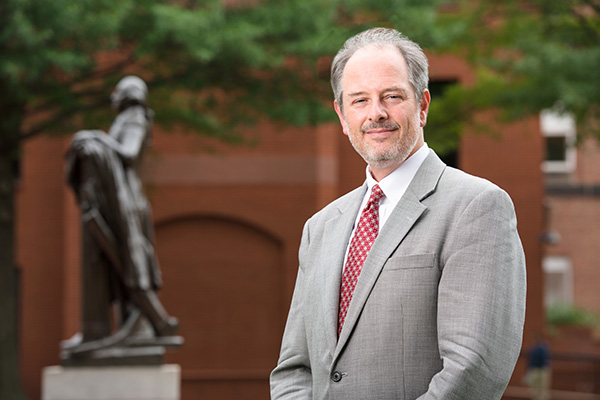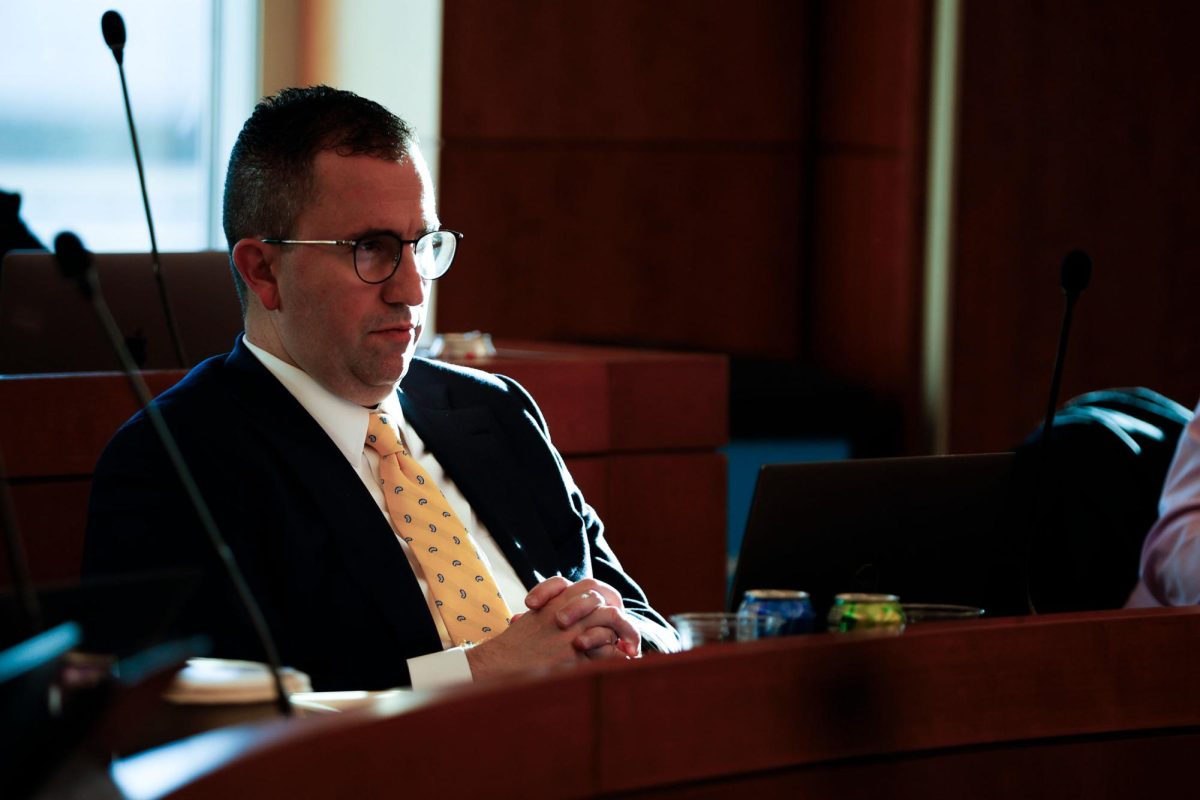
Law professors are bracing for a surge in applications for already highly-competitive spots in its pro bono clinics – a rise stemming from new American Bar Association standards.
The clinics, which allow GW Law School students to gain experience in the courtroom before they graduate, accept about half of applicants. With new nationwide requirements for practical experience, such as a semester of work in a clinic, faculty expects more students to apply for the program, which would force that acceptance rate to drop.
The ABA, the law school’s accrediting body, passed a reform this month that will require law students entering after 2016 to earn six credits by working in a legal clinic or earning another type of hands-on experience before graduating.
The reform, one of several the ABA passed to improve legal education as the pool of available legal jobs shrinks and interest in law schools wanes nationwide, expands on a practical experience requirement GW already has.
GW’s 11 legal clinics, which offer students the chance to do pro bono legal work under the guidance of a professor, have become a more popular option over the years, especially as students search for ways to distinguish themselves from their peers competing for the same jobs.
Joan Meier, a clinical law professor who leads GW’s Domestic Violence Project, said other options besides legal clinics are less structured and may not offer students the same support they receive when working directly with a professor.
While most students have several chances to gain practical experience during their law school careers, those who work in clinics benefit from seeing every step of a trial, she said.
“That ownership and complete experience from top to bottom of what is involved in doing a case is really valuable, and I think its a great capstone,” Meier said.
But a campus-wide budget crunch could inhibit plans for the law clinic program’s expansion, Meier said. Like law schools across the country, GW has had to cut back programs as fewer students have enrolled.
While about 200 students apply to work in the clinics each semester for 100 spots, professors say most students who want to work in a clinic will have an opportunity do so before graduation. The clinics each focus on a different specialty, from immigration to domestic violence to health rights law.
Until the school can level its revenue stream, it would be difficult for it to open new clinics on campus, she said. The law school brought in nearly 100 fewer students than its typical class size in fall 2013, which has translated to a loss of $5 million in tuition over the past two years.
The school has also spent about $3 million to fund the Pathways to Practice program, which financially supports students who graduate and take unpaid internships. About one-fifth of the Class of 2012 were enrolled in the program last year.
Elizabeth Field, a spokeswoman for the law school, said the ABA has given schools two years to transition before the organization enforces the requirement.
“The experience of having a client, often for the first time, and feeling that sense of obligation and responsibility that can be very transformative in a law student’s education,” said Jeffrey Gutman, who directs the school’s Public Justice Advocacy clinic.
Gutman said the school will have to determine which opportunities it offers will count as “experiential learning.” He said students may be able to count certain courses, such as trial advocacy or legal drafting, toward the six credits.
“It’s not a change in concept for us. It’s a change in numbers in some ways,” Gutman said.
Students now choose how many credits – between four and six – they want to earn while working in a clinic for a semester.
They might be able to earn credits through an internship or externship, Gutman said. While at an internship, supervisors assign responsibilities and projects to students, an externship is more similar to job shadowing. Gutman said some students prefer the clinical experience because they act as the primary lawyer on a case, rather than working under another lawyer.
“The student is really the attorney on the case, and the clinical faculty guide and oversee and make sure that the clients’ needs are being met, but the student has the direct responsibility for the legal work being done,” he said.
Other reforms the American Bar Association passed this month include increasing the number of credits law school students can earn in distance-learning courses and shifting an emphasis from LSAT scores to bar-exam scores when evaluating schools for accreditation.
The changes come after several months of discussions about how law school requirements should change to prepare students for an evolving field. When he arrives on campus next week, incoming dean Blake D. Morant will have to decide the kind of direction the law school should take.








